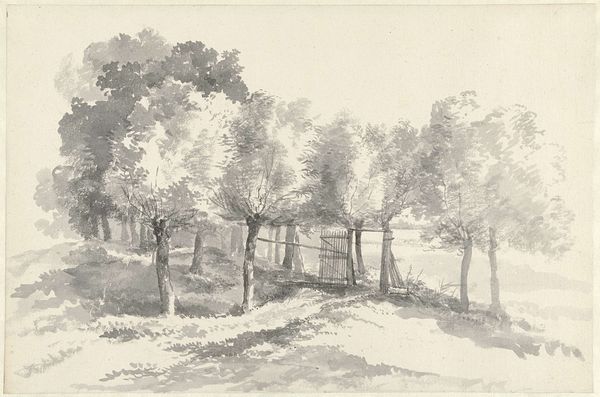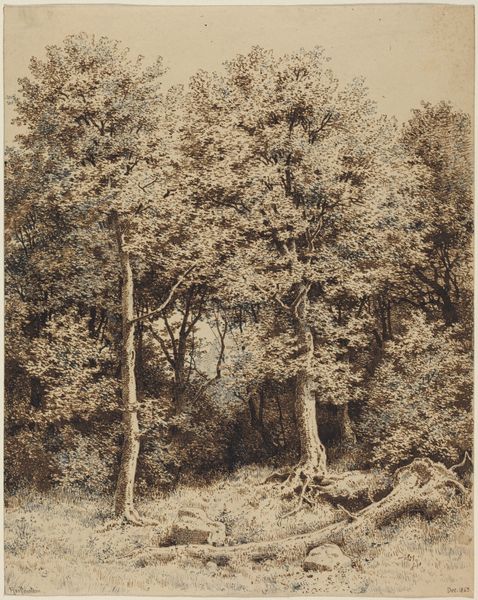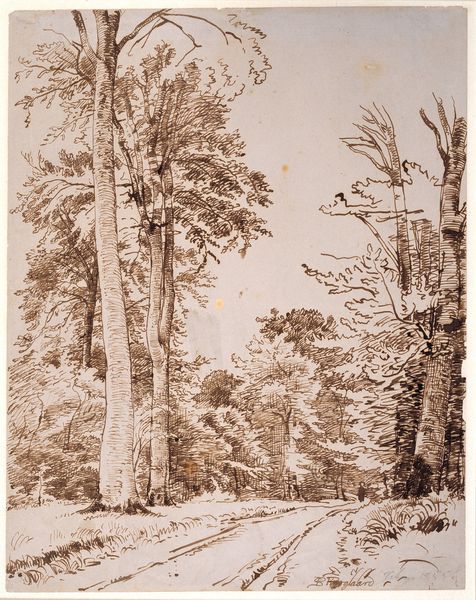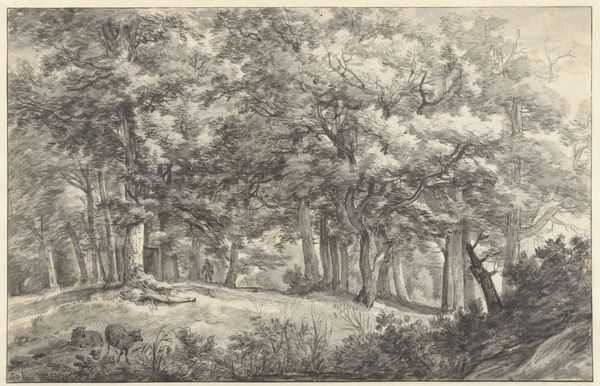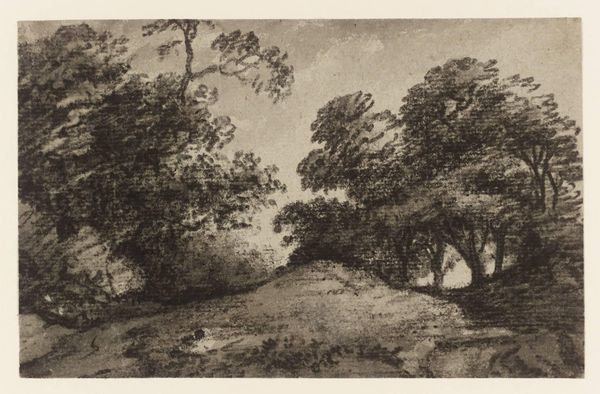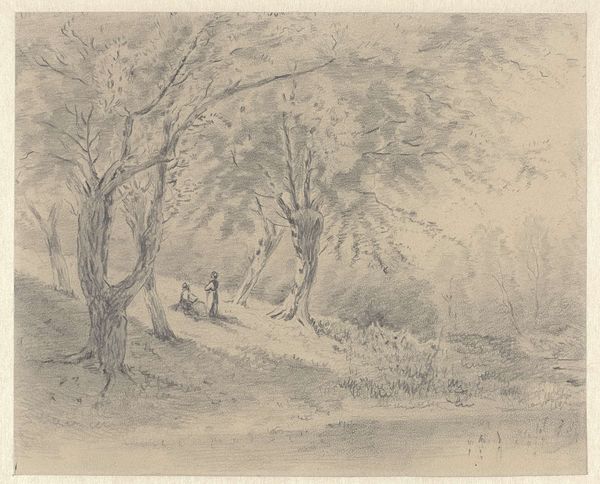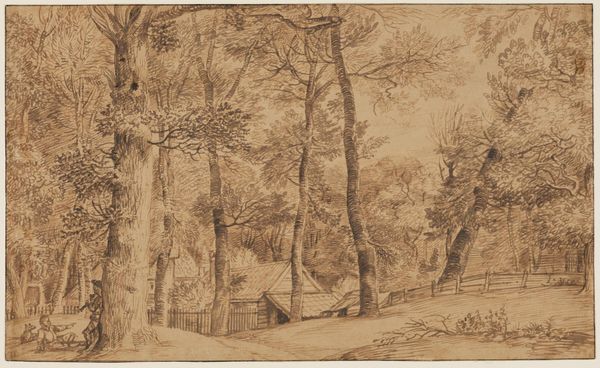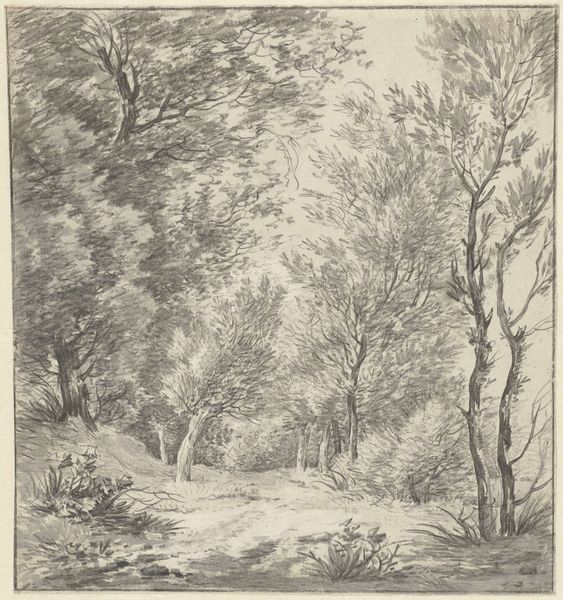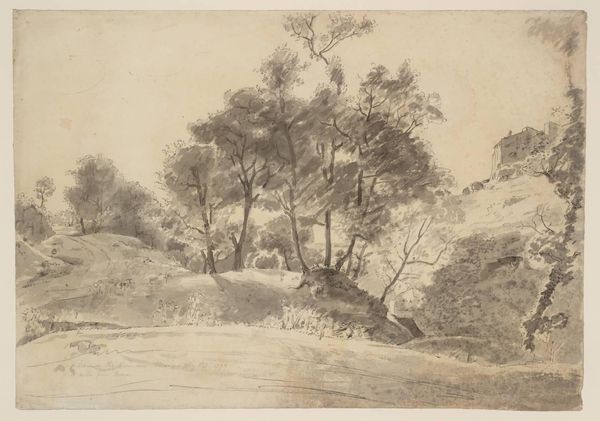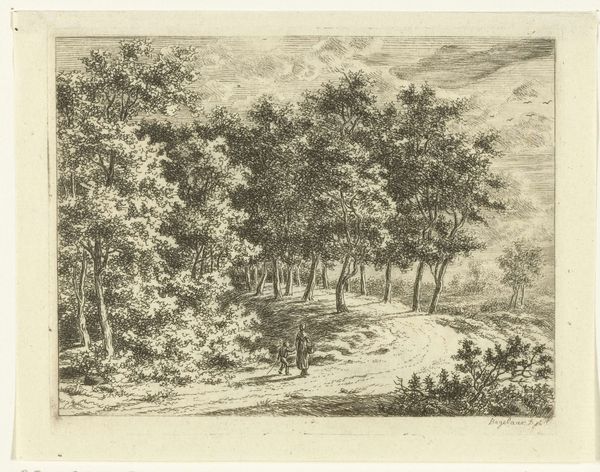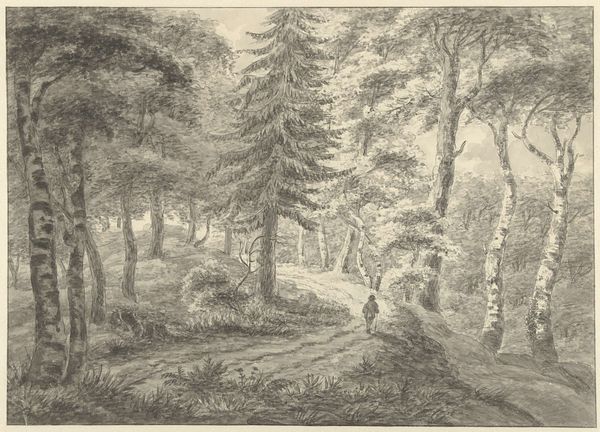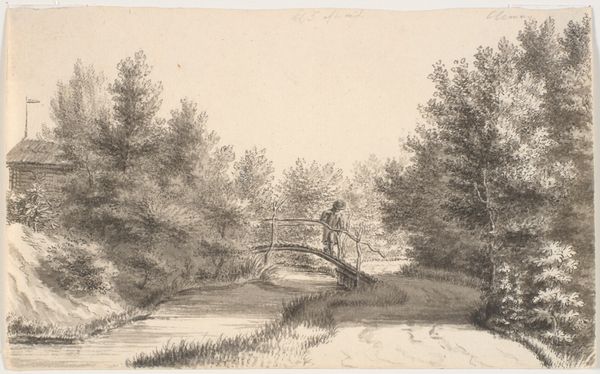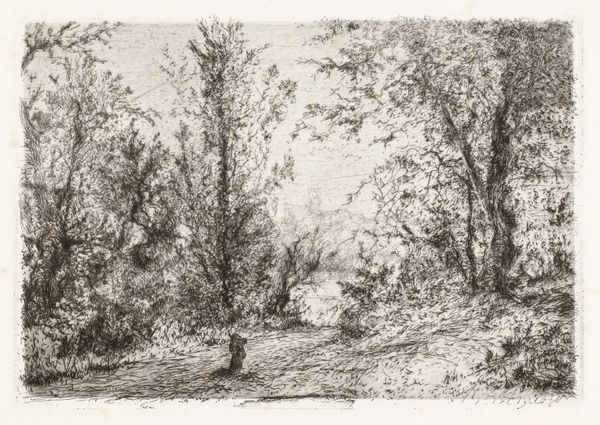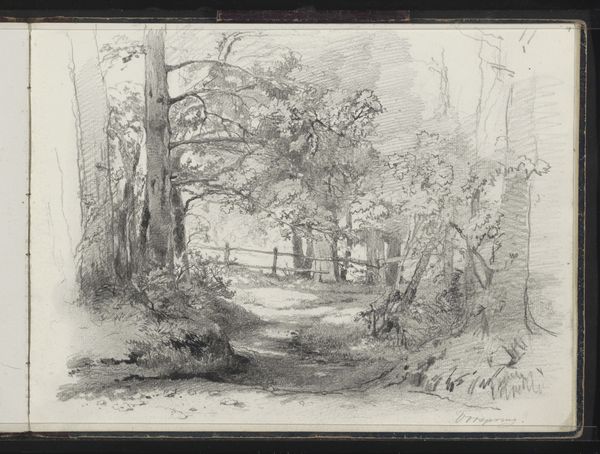
Dimensions: support: 385 x 540 mm
Copyright: CC-BY-NC-ND 4.0 DEED, Photo: Tate
Curator: This is John Downman's "In the Wood near Albano," a drawing held in the Tate collections. Editor: It feels intensely private, almost secretive. The grey washes give it a hushed quality, like a memory fading at the edges. Curator: Downman was deeply engaged with the picturesque and the social dimensions of landscape. This work, though seemingly benign, touches upon the contemporary concerns of land ownership and access. Editor: The figures there, in the distance, appear like ghosts. Do they represent freedom, or perhaps the looming pressures on the land? The wooded path, the slope... it’s an archetypal image of nature, transformed. Curator: Indeed. Downman often used landscape to mirror the social dynamics of his time, subtly embedding commentary on class and societal constraints within these seemingly idyllic scenes. Editor: I find it fascinating how he uses light and shadow to create this sense of both enclosure and possibility. The visual language speaks to a tension between nature as refuge and nature as contested space. Curator: It's a drawing that resonates across centuries, still prompting discussions about our relationship to land and each other. Editor: Absolutely. Its symbolic power lies in that ambiguity, a whisper from the past that continues to echo.
